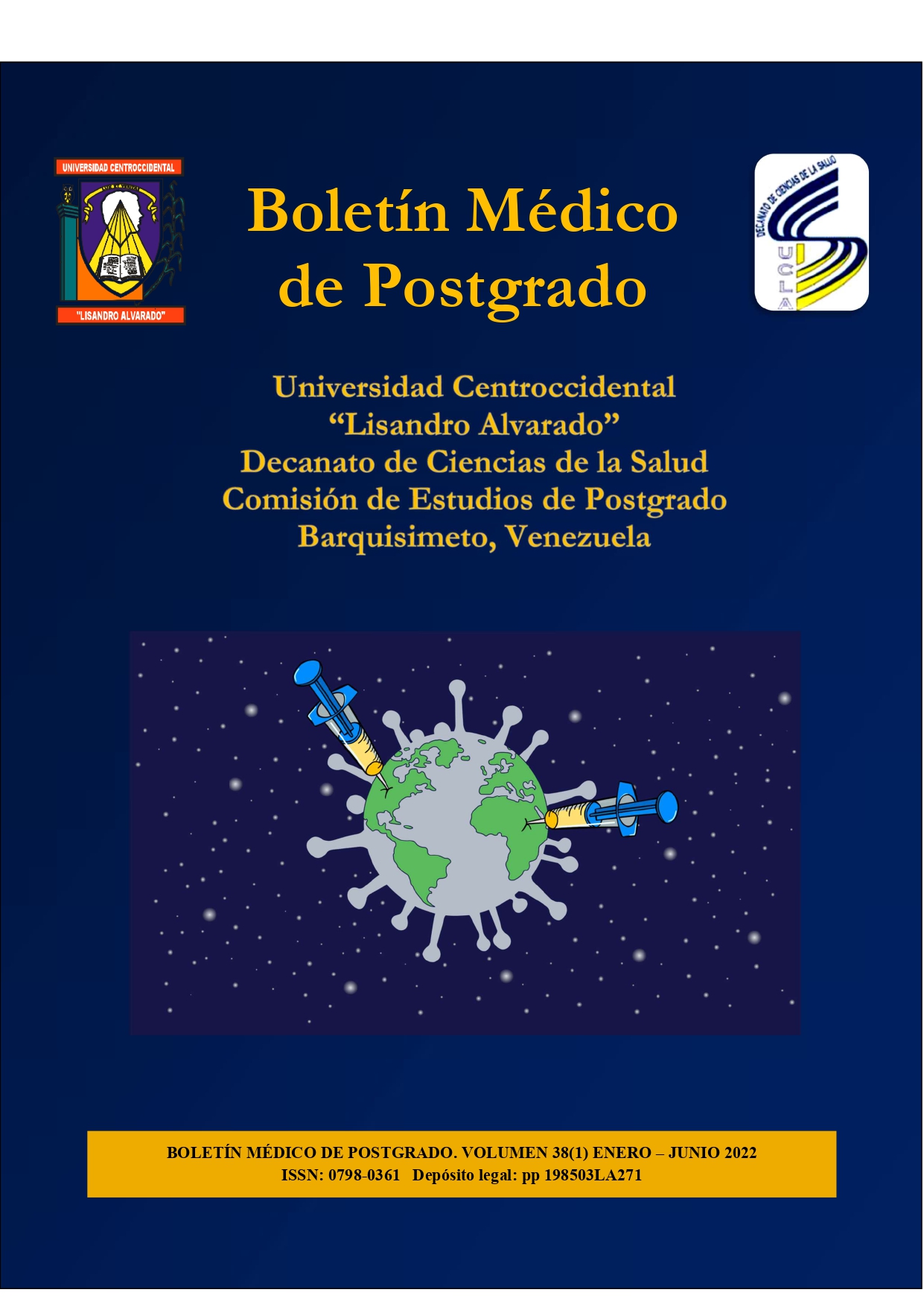Usefulness of the modified abdominal trauma index as a predictor of postoperative morbidity and mortality Hospital Central Universitario Dr. Antonio María Pineda
Keywords:
abdominal injuries, morbility, mortality, shock, sensitivity, specificityAbstract
With the objective of determining the usefulness of the Modified Abdominal Trauma Index (ATIm) as a predictor of postoperative morbidity and mortality in patients with abdominal injuries who were attended at the Servicio de Cirugía of the Hospital Central Universitario Dr. Antonio María Pineda during the period December 2018-January 2019 a cross-sectional descriptive study was carried out with a sample of 28 patients, with an average age of 28.21 ± 12.78 years; the principal mechanism of trauma was by single-shot firearm (46.43%) and the most injured organs were colon (42.86%) and jejunum (32.14%). The most common surgical technique performed was repair or primary raffia (71.43%). Of the physiological and circumstantial factors described the time between trauma and surgical intervention was less than 6 hours (60.71%), 46.43% of cases did not present shock while 64.29% did not show contamination. Postoperative morbidity was 28.57%; postoperative mortality was 3.57%. Thus, for postoperative complications, the standard ATI was 25% and the modified ATI was 10% (p < 0.005). The modified ATI showed a sensitivity of 75% and specificity of 15% to predict complications in comparison with the standard ATI that reported a sensitivity of 87.5% and specificity of 15%. These results show the utility of physiological parameters added to the use of the anatomical variables of the ATI which allows a prediction of postoperative morbidity and mortality in patients with abdominal trauma.
Downloads
References
Aponte D. Características clínicas, epidemiológicas y del resultado de manejo de los pacientes con traumatismo abdominal [tesis en internet]. Universidad Nacional de Trujillo; 2013 [citado 2018 Sep 29]. Disponible en: https://dspace.unitru.edu.pe/handle/UNITRU/625.
Pinedo J, Guevara L, Sánchez M. Trauma abdominal penetrante. Cirugía y Cirujanos 2006; 74(6):431-442.
Belzunegui T, Ali B. Escalas para el pronóstico del paciente con traumatismo grave. Emergencias 2015; 27: 355-356.
Peralta N, Perozo J, Rivero E, Vásquez D, Zaraza I, Perozo H. Caracterización y manejo del paciente con Traumatismo Abdominal Penetrante. Hospital Central Universitario Antonio María Pineda. Especialización [tesis]. Barquisimeto, estado Lara: Universidad Centroccidental Lisandro Alvarado; 2017.
González C, Duque J, Uzcátegui E. Índice de Trauma Abdominal como factor predictivo de morbi-mortalidad postoperatoria. Rev Médica Sanitas 2016; 19(3): 132-142.
Syed G, Shahrukh E, Hasnain Z. High PATI Score is Associated with Increase Mortality in Patients with Penetrating Abdominal Injuries: A Retrospective Review. Natl J Health Sci 2016; 1(1): 30-33.
Vanita T. Prospective Study Comparing The Clinical Abdominal Scoring System (Cass) With Blunt Abdominal Trauma Severity Scoring (Batss) In Predicting The Necessity of Laparotomy. IOSR J Dent Med Sci 2018; 17(3): 25-33.
Camona P, Figueroa B. (2010). Manejo del Trauma Pancreático-Duodenal en pacientes con Traumatismo Abdominal en el Servicio de Cirugía General del Hospital Central Universitario Dr. Antonio María Pineda. Especialización [tesis]. Barquisimeto, estado Lara: Universidad Centroccidental Lisandro Alvarado; 2010.
Aldemir M, Tacyildiz I, Girgin S. Predicting factors for mortality in the penetrating abdominal trauma. Acta Chir Belg 2004; 104(4):429-34.
Ali B, Fortún M, Belzunegui T, Reyero D, Castro M. Escalas para predicción de resultados tras traumatismo grave. Anales del Sistema Sanitario de Navarra 2017; 40(1): 103-118.
Muñoz M, Villar A. Traumatismo Hepático: Manejo, Mortalidad y factores relacionados en un Hospital General (2009-2015). Especialización [tesis]. Lima, Perú: Universidad Peruana Cayetano Heredia; 2016.
Published
How to Cite
Issue
Section

This work is licensed under a Creative Commons Attribution-NonCommercial-ShareAlike 4.0 International License.
Las opiniones expresadas por los autores no necesariamente reflejan la postura del editor de la publicación ni de la UCLA. Se autoriza la reproducción total o parcial de los textos aquí publicados, siempre y cuando se cite la fuente completa y la dirección electrónica de esta revista. Los autores(as) tienen el derecho de utilizar sus artículos para cualquier propósito siempre y cuando se realice sin fines de lucro. Los autores(as) pueden publicar en internet o cualquier otro medio la versión final aprobada de su trabajo, luego que esta ha sido publicada en esta revista.



